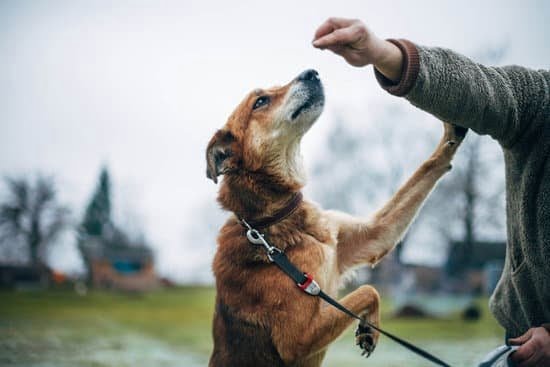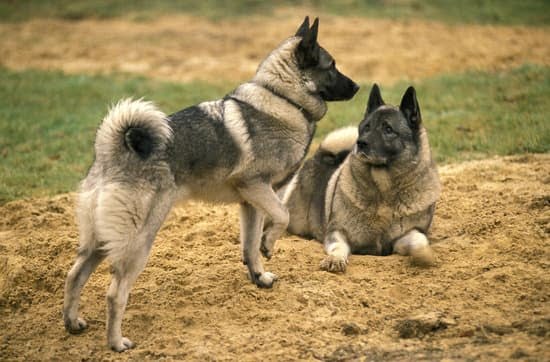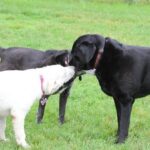Introduction
Dog training is an important part of having a canine companion. Training your dog ensures that they behave appropriately, obey basic commands, interact with other dogs and people, and stay safe. Training a dog also helps to establish communication between you and your pet, creating a respectful bond based on trust and understanding.
When it comes to correcting bad behavior in dogs, proper techniques play an integral role in establishing expectations for the dog’s behavior and ensuring that the desired result is achieved. There are various methods for addressing negative behaviors such as vocal correction (simply telling them “No” when they do something wrong), time-outs (isolating them from fun activities or people), positive reinforcement (praising them when they do something correct), food rewards (using treats as positive reinforcements) and other forms of mild discipline as necessary. It’s also important to remember that all these methods should be used with love, patience and consistency to ensure the best results. With regular practice and reinforcement of good habits, many owners are able to effectively train their dogs without needing to resort to physical punishments or harsh methodologies.
Correcting undesirable behaviors in dogs can help owners develop a strong relationship with their pets while also teaching their furry friends how to better fit into our lives. In particular, consistent training helps reinforce appropriate behaviors so that the dog understands boundaries, listens better when called upon, behaves around other animals properly, obeys basic commands like “sit” and “stay”, walks on its leash more calmly and respects authority figures such as veterinarians or pet-sitters. Proper training also encourages bonding beyond just love – it teaches your pup responsibility too!
Understanding Dog Behavior and Identifying Unwanted Behaviors
Before correcting your dog’s unwanted behaviors, it is crucial to understand why they might be engaging in that behavior. Evaluate the situation, analyze if anything has changed or if there is something stressful happening for the pup. Look for patterns and try to find out why the dog exhibits certain behavior. It could be due to anxiety or even something as simple as boredom. Once you have identified the source of negative behavior, you can start looking for ways to correct it.
Some common signs of problem behaviors include biting and barking excessively, digging, not responding to commands, jumping on people or furniture, urinating indoors and eating inappropriate items. It is important to identify which behavior needs to be corrected first before starting any training program. Then make sure everyone who interacts with your dog understands current techniques used in order to manage undesired behaviors effectively.
The next step is to create a training plan tailored specifically for your pup that covers desired behaviors and how you want them to respond when triggered by different circumstances or stimuli. It should also include specific commands such as “sit” or “stay” and clarify expectations around rewards such as treats or verbal praise when desired behavior occurs. Researching modern corrective approaches used by experts can help improve efficacy of your training process effectively and provide long-term solutions that can benefit both you and your pup equally in various settings!
Making Use of Positive Reinforcement
Using positive reinforcement is one of the most effective methods for training a dog and correcting bad behavior. Positive reinforcement involves rewarding the desired behavior, either with treats or praise, whenever the dog displays it. This encourages the dog to continue displaying this behavior more often as they learn that they will receive rewards for good behavior. Additionally, positive reinforcement can be used alongside other techniques and should be employed in all aspects of dog training to ensure your pup understands what you’d like them to do. Praising good behavior and never punishing bad behavior also strengthens the bond between you and your pet, further encouraging them to act appropriately. For example, rewarding a puppy with a treat when they sit down on command will encourage them to sit again in the future so double their chances at receiving a reward next time! It is important that rewards are given soon after the desired action is performed and not delayed as dogs have short memories. If a negative response to naughty behaviour occurs by ignoring it or simply removing a privilege (such as toys), then this also counts as positive reinforcement since negative messages are avoiding being communicated which are more beneficial than harsher consequences.
Exploring Methods for Disciplining andTraining
When a dog exhibits bad behavior, it is important to properly address the situation as soon as possible. The earlier a problem is addressed and training begins, the better chance the pet has of developing good habits. However, not all corrections are going to be appropriate across the board; particular methods may work for one dog but have little effect on another. Knowing a variety of ways to shift their behavior can help pet owners when attempting to curb bad habits in their dogs.
Using positive reinforcement is considered ideal and tends to be more successful than negative reinforcement. Positive reinforcement involves rewarding desired behaviors with treats or toys while ignoring less desirable actions. This can help teach dogs what they should do rather than punishing them for inappropriate behaviors or actions. Rewarding positive behavior with hugs, verbal praise, and kindness can also be effective in teaching new skills or reinforcing existing ones.
In certain cases involving aggression or serious disobedience, physical corrections with a leash may be necessary. For example, if a dog starts barking excessively in public spaces, placing them on a leash and gently pulling it back each time they bark can eventually condition them not to repeat that behavior again due to its unpleasant association with limited freedom and potential embarrassment for the owner.
It is also possible for owners to correct bad behaviors without harsh verbalizations by using distracting techniques like clapping loudly if a dog barks persistently at visitors or visitors approaching the pet’s food bowl. Any abrupt sound within their environment can grab their attention momentarily and prevent them from returning to prior actions if frequently impressed upon them at regular intervals over time during episodes of undesirable behaviors.
Whatever technique is used for correcting bad behavior in a pet, consistency is key – that means doing your best not to reward any unwanted action even once so that it does not become seen as welcomed behavior by the animal down the line as this could undo any progress already made!
Recognizing the Signals of Stress in Your Dog
Dogs will often show signs of stress before they begin to exhibit bad behavior. It is important to learn how to recognize the signals that your dog displays when they are under emotional or physical stress. This can help you stop bad behavior because you can intervene before it begins. Some of the common signs of a stressed dog include lip licking, curled lips, raised fur on their backs, yawning, panting, hunching posture and turning away from something they don’t like. When these signs start occurring it’s important that you remove your dog from the situation at once. Take them away from people, other animals or anything else that is causing the negative response. Then focus on calming activities with them such as providing treats, petting and talking in a soft voice until their anxiety subsides. Once your dog is calm enough for training then gradually re-introduce certain situations but at a slower pace and always reward your dog for good behavior. Showing your animal clear expectations for acceptable behavior along with positive reinforcement will go a long way toward correcting any lingering bad behaviors.
Identifying and Eliminating Anxiety Triggers
If a dog’s inappropriate behavior is due to anxiety, it is important to identify and eliminate the specific triggers that are responsible for this. For example, if a dog chews furniture when its guardian is away at work, it may be because the dog is feeling anxious about being alone. In this case, an effective approach would be to slowly acclimate the dog to remaining at home while their guardian is away. This can be done by gradually increasing the amount of time they remain alone until they become comfortable with extended periods of solitary confinement. The guardian should also consider providing the dog with interactive toys or treats that can occupy them during their absence. Additionally, counterconditioning can be used to teach the dog more desirable behaviors such as relaxing in their bed or playing with certain toys during separating periods.
Establishing and Enforcing Consistent Rules
When it comes to correcting bad behavior in your dog, it is important to have an established set of rules and to enforce them consistently. This will help your dog learn what acceptable behaviors look like and what is not allowed. Make sure everyone who interacts with your pup knows the rules, including any visitors or family members that may come over. Establishing a clear line between punishments and rewards will ensure your pet understands the difference between good and bad behaviors.
When punishing bad behavior, it is crucial to keep the punishment consistent and immediate. If possible, avoid raising your voice or using physical punishment as this may only worsen the problem. Instead, use clear verbal cues like “No” or “Stop” if you want your pet to stop an inappropriate behavior right away. Additionally, give yourself enough time between issuing a correction and offering a treat for successful compliance – this reinforces the importance of following commands promptly and may encourage future good behavior. When done correctly, correcting bad behavior can be done without causing harm or distress to your furry friend!
Building a Bond Through Positive Training
Positive dog training does more than just curb bad behavior. It also builds a strong bond of trust and respect between dogs and their owners. Positive training encourages good habits by providing rewards for behaviors that you like, such as sitting calmly and coming when called. At the same time, it teaches your pup to ignore other behaviors that are not acceptable, such as barking or jumping on guests. Furthermore, positive dog training uses distraction, redirection and reward-based methods such as praise and treats to help properly channel your pup’s energy and enthusiasm so they can focus on a task or stay in one place. The key is consistency; as long as you are consistent with your praise (or whatever rewards you give) when they show desirable behaviors and remain calm when they don’t, your pup will learn quickly. Additionally, incorporating activities like obedience class into regular daily routines lets your pup practice positive commands while socializing with other dogs—another important habit for them to master. In the end, reinforcement of good habits during positive dog training helps build a strong bond between you and your pet for many years ahead!
Exercises and Activities to Foster Good Behavior
Dog training requires consistency and patience when it comes to correcting bad behavior. It is important to remember that dogs do not understand reprimands or punishment—meaning that correcting a dog’s poor behavior will likely not result in the desired effect if done haphazardly and without forethought. Instead, use positive reinforcement strategies such as rewarding good behaviors with treats and praise. Additionally, there are exercises and activities owners can partake in to foster good habits in their four-legged friend.
One activity owners can do is to teach basic commands like sit, stay, come, down and other appropriate commands. Start by giving one command at a time and work your way up after progress has been made. This is a great exercise to help reinforce good behaviors during playtime or walks. Aside from teaching commands, obedience training also helps improve responses to verbal cues as well as teaches the pup how to follow directions on cue. These activities require both patience and practice but over time your pup should become more aware of how desired behaviors are properly displayed and respond accordingly upon hearing certain verbal commands or signals from the owner.
Additionally owners can try techniques like redirection which involve interrupting bad behavior by offering an alternative activity that requires their full attention for example playing fetch or tugging with an interactive toy. This technique can help break the pup’s focus from any negative actions they were engaging in prior (i.e chewing on furniture). In addition, it’s essential to provide plenty of structured physical exercise throughout the day so they have an outlet for excess energy instead of misbehaving due to boredom/negativity. Making sure your pup gets adequate amounts of physical activity helps reduce stress and anxiety as well as increases mental alertness needed for proper learning/action response towards stimuli in their environment like humans or other animals which ultimately reduces instances of unwanted behavior due lack of understanding their surroundings or sensations.
Conclusion
Dog training is an essential factor in strengthening the bond between humans and their canine companions. Training helps dogs to understand what behaviors will be rewarded and which ones will not. By using positive reinforcement techniques, establishing clear boundaries for acceptable behavior, and recognizing and correcting any undesirable behavior quickly, dog owners can create a secure and consistent environment that helps cement the loving relationship between pet and owner. Proper training provides pet owners with a communication tool that can prevent many behavioral problems before they start or intervene if they already exist. With longer attention spans come better understanding of expectations and an overall improved quality of life for both parties involved in this special relationship! Ultimately, by providing effective guidance through proper training, both the human and canine members of the household can strengthen their relationships through mutual understanding and respect.

Welcome to the blog! I am a professional dog trainer and have been working with dogs for many years. In this blog, I will be discussing various topics related to dog training, including tips, tricks, and advice. I hope you find this information helpful and informative. Thanks for reading!





